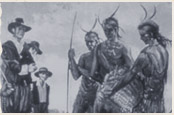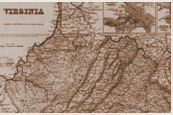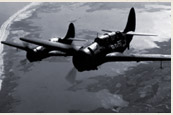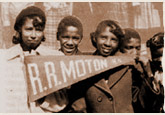University of Virginia: Virtual Jamestown
Description: This resource offers a comparison of a watercolor done by the first European artist to arrive in British North America (Englishman John White, c. 1585) and a later engraving of White's watercolor created and printed in continental Europe by Theodor De Bry (1590). White's watercolor is notable as one of the earliest depictions of some of the Southeastern native peoples. But it is also interesting to note the ways in which De Bry took liberties with White's images, "interpreting" them for his European audience. A comparison of the White and De Bry images offers students the opportunity to explore and comprehend sixteenth-century English views of the peoples they encountered in the "New World."
Teaching Tips:
"Do Now" Suggestions
- Students could brainstorm a list of nouns and adjectives on the topic, "What are some characteristics of Native American women of the 16th and 17th centuries?" The teacher could then lead a discussion on stereotypes and biases, and integrate these two images into the discussion.
- Students could create a Venn Diagram, comparing and contrasting the painting and the engraving. Students could then use these comparisons and contrasts to write a paragraph or short essay noting the similarities and differences in the two images and identifying the meaning or purpose behind the differences.
- Teachers interested in teaching about bias and stereotype, and point of view, could make use of this lesson combined with other similar materials.
- Students could integrate these artifacts with other images and artifacts from the Virginia Center for Digital History to draw some conclusions about race relations between early colonists and Native Americans of the 16th and 17th centuries.



